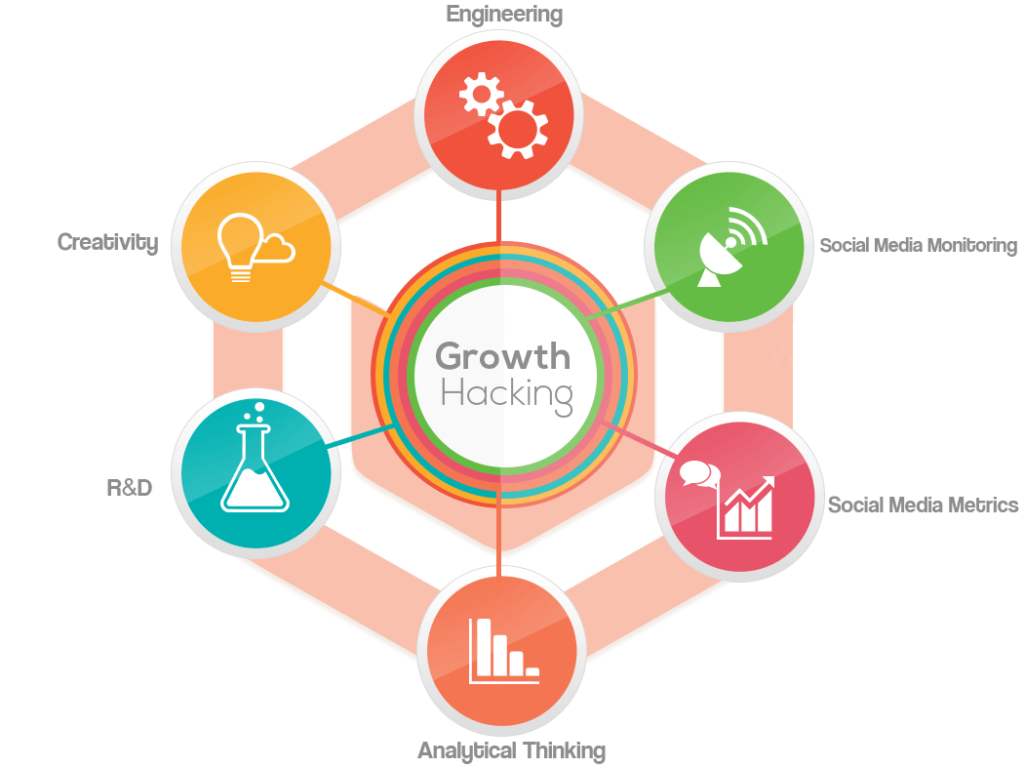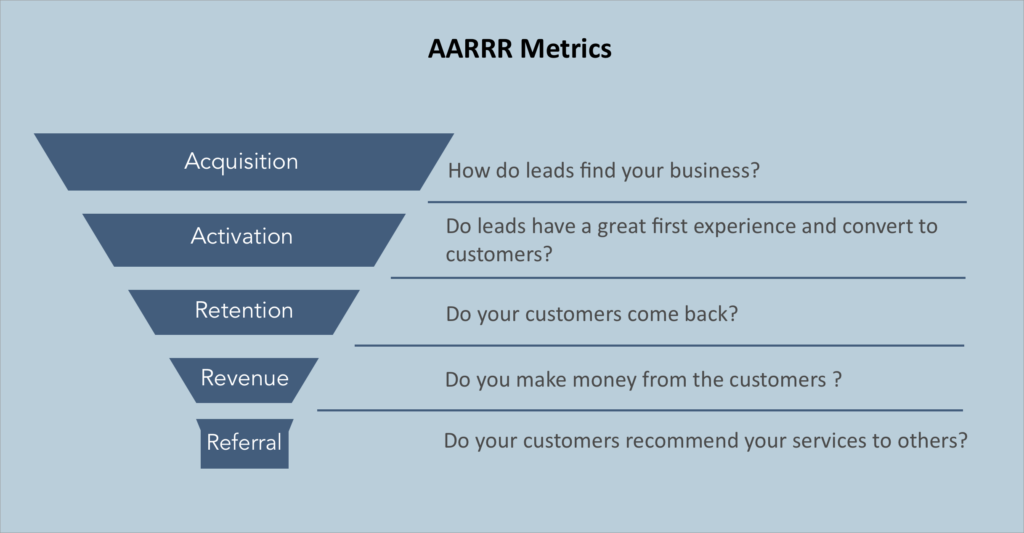I had a great time working in a fast-growing startup that Google had chosen (with only 5 others from India) for its accelerator program. Acting as the Product Manager for the company’s very interesting AI product, I had plenty of opportunities to explore the real startup environment out there, and in turn, discover my inner strengths. The practical exposure made me aware of numerous challenges a startup faces during its initial days, so I was already eager to enhance my learnings which are tailor suited for startup model of business. My mentors in the company told me about the subject of ‘Growth Marketing’ which is tailor suited for startup model of business. So, I started hunting for a good online course on the subject. Fortunately, I came across the CXL Institute’s website. The institute offered a plethora of courses taught by excellent minds of the field. I took no time in getting myself enrolled in offered courses. What follows next is the review of my learnings about Growth Marketing over the last week.
Traditional Marketing Vs. Growth Marketing
Lessons start with outlining major differences between Traditional Marketing and Growth Marketing. While Traditional Marketing focusses on top of funnel i.e. Awareness and Acquisition. Growth marketing focusses on the entire funnel and is primarily driven by experimentation. This experimentation is preceded by the understanding of what exactly is a customer benefit and is it same for everyone. For instance, if there’s a product which has minimal features in its product category, and additionally priced low – even lower than it should for even these basic features, then can we be sure that the product’s going to be top-selling? No. Depending on several facts, all the customers who value convenience would never go with the product. So, the assumption that the company can just increase market share if it can reduce price is far from right, and effective marketing would involve hitting the right balance between the Price-value and Convenience-value.

Such a balance can be achieved by running consistent experiments and rapidly learning from them. Hypothesis testing is the most popular method and based on the result of the initial hypothesis, subsequent hypotheses can be framed and tested. Similarly, such tests can be executed through multiple marketing channels like Email Marketing, SEO etc. and the corresponding results of this test can help in identifying the best message to be sent across the chosen consumer cohort and media. Then the final layer testing would mean custom tailoring messages based on consumer reactions in the previous step. Only performing the initial tests can give up to 10-20% conversion improvements while experimenting up to the final layer can improve conversion by 40-50%.
Experiments are always the best way to understand consumers, and even if we fail, we learn. The subsequent lessons taught me about Growth Hacking which is very similar to Lean Startup methodology. We built a minimum viable marketing campaign, tested them and improved them from the learnings. The key is not to find the perfect solution but fast solutions. Obviously, it’s not targeted to find that one solution that can solve all our problems but which would be effective in solving the problem at hand immediately.

Individual Goals
While these concepts covered essential things for organizations as a whole, the next few lessons talked about individual goals which every person aspiring to become an effective marketeer should pursue i.e.
a) Channel level expertise
b) Analytical Capability
c) Project Management/ Leadership skills
Each marketeer should have a basic command over all the 3 and be expert in at least one of them based on an individual’s long-term perspective. However, the gate is not closed for the ones who aren’t expert in any of these. Further lessons told about the other essential elements which recruiters look for in candidates aspiring for an executive-level job in marketing which included most importantly one’s willingness to learn and ability to demonstrate this willingness. This can significantly aid the recruiter in over-looking the expertise factor. It is needed from each marketeer that he/she is obsessed with being productive and effective.
The subsequent course emphasized the importance of building a growth process for a company. It refers to outlining the trajectory map the company plans to follow and thus requires that the company is specific about every goal it’s trying to achieve within each period (this can be quarterly, semi-annually or annually) the process of which first starts with deciding if it needs user growth or revenue growth. And once it’s done, the company can apply the Pirate Metrics, or AARRR (Acquisition, Activation, Retention, Revenue and Referral) framework to set stepwise goals.

Channel Identification
Next step is to identify channels most suitable to the goal- Push marketing, Content marketing, Growth marketing, SEO, SEM etc. Meanwhile, it should be able to determine the most accurate consumer journey which eventually becomes very crucial. Being able to create an optimal buying experience and after-feel of product purchase can produce long term results, and such exercise should be performed not only by entry-level managers but by the ones up in the hierarchy too. Because consumers consist of different personas, characteristics and context, personalized communications can be tailor-made only if we are close to the right consumer journey.
Growth Marketing Models & Planning Objectives
Final steps include defining our growth model and planning quarterly objectives. Starting with exploring the data through the lens of the consumer journey, hunting for funnels with highest potentials and prioritizing the most important things, the company must identify the biggest pain-points which can make up for the areas of opportunity. One thing which is very important while setting goals is that these shouldn’t be either easily achievable or very tough, but ones which push people beyond their limits but possible to achieve.
Team level quarterly goals and company level quarterly goals should be aligned but at the same time be distinct enough where different expertise within the company can be fully leveraged. One common question that comes to mind is how to set priorities. This is done by projecting the impact of each of the proposed plan (with the help of records), how much cost is going to get into implementing the project (both in terms of money and efforts) and the expected duration of project completion. Choosing the right experiments, and experimenting faster is the key. Both of these goals can be met by targeting the automation of the routine processes, which the course lessons emphasized heavily as a ‘must’ in this fiercely competitive business environment.
Consumer’s Want Vs. Need
The Digital revolution has changed the world in many ways, and there is huge information to exploit and numerous possibilities to explore. A company should answer first why a consumer would NEED its product rather than want it, when is the right time to pitch to them and what is the right message. And to do that, user surveys play a crucial part if executed properly. These surveys should be short, not open-ended unless extremely necessary and ask just one or two questions. Well, it may at first seem difficult to understand but ones the company can answer what exactly are they offering and what is need for it, it’s not a tough task to bring down the number of questions to one or two.

One very interesting insight I got from the growth marketing course was that not every time disclosing an incentive before asking consumers to respond can motivate people. Revealing the incentive after completing the survey increases the value of the incentive and it triggers reciprocity in the responder’s mind which can help in getting more responses through the responder’s referrals. When setting options for the survey, one should try to combine similar responses so that each option is different than the other.
About the author:
Ashwani Kumar is an MBA student from IIM Indore.
He was one of the participants of Optimization – an article writing competition organised jointly by Mercur- I, Marketing club of IIM Indore and Marketing Lake.



